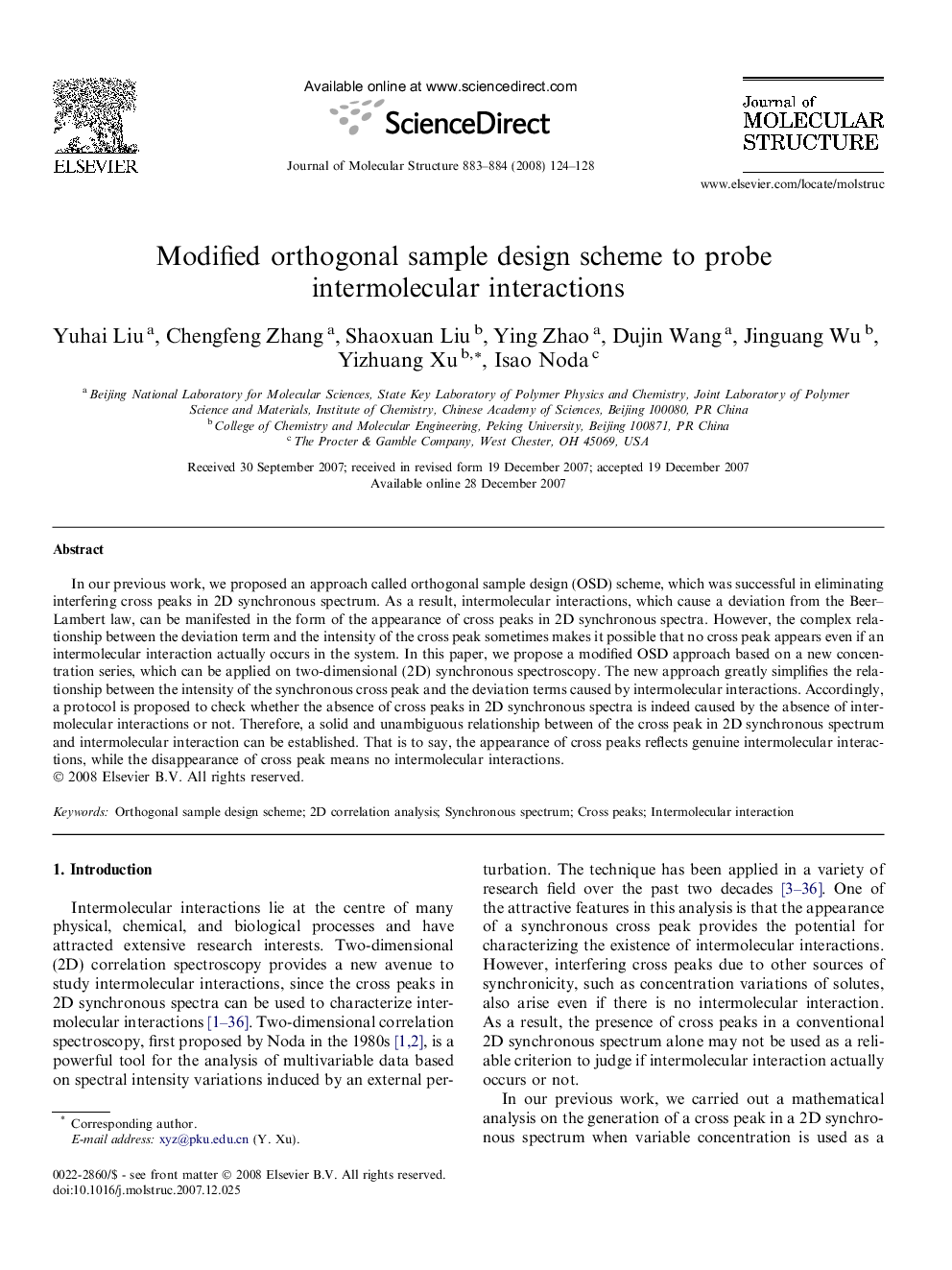| Article ID | Journal | Published Year | Pages | File Type |
|---|---|---|---|---|
| 1407313 | Journal of Molecular Structure | 2008 | 5 Pages |
In our previous work, we proposed an approach called orthogonal sample design (OSD) scheme, which was successful in eliminating interfering cross peaks in 2D synchronous spectrum. As a result, intermolecular interactions, which cause a deviation from the Beer–Lambert law, can be manifested in the form of the appearance of cross peaks in 2D synchronous spectra. However, the complex relationship between the deviation term and the intensity of the cross peak sometimes makes it possible that no cross peak appears even if an intermolecular interaction actually occurs in the system. In this paper, we propose a modified OSD approach based on a new concentration series, which can be applied on two-dimensional (2D) synchronous spectroscopy. The new approach greatly simplifies the relationship between the intensity of the synchronous cross peak and the deviation terms caused by intermolecular interactions. Accordingly, a protocol is proposed to check whether the absence of cross peaks in 2D synchronous spectra is indeed caused by the absence of intermolecular interactions or not. Therefore, a solid and unambiguous relationship between of the cross peak in 2D synchronous spectrum and intermolecular interaction can be established. That is to say, the appearance of cross peaks reflects genuine intermolecular interactions, while the disappearance of cross peak means no intermolecular interactions.
